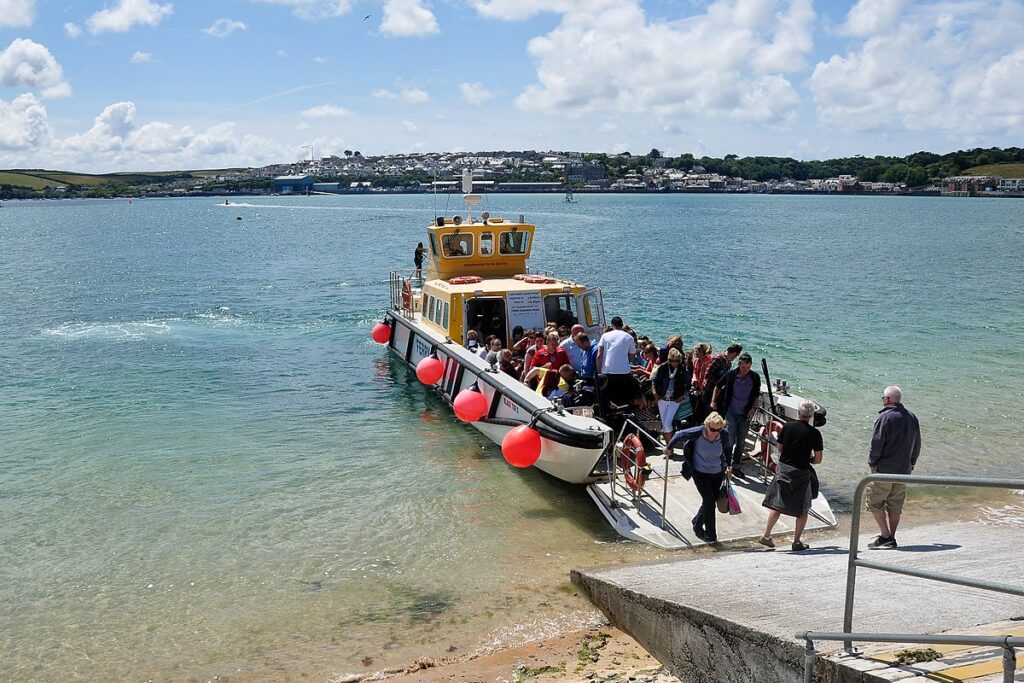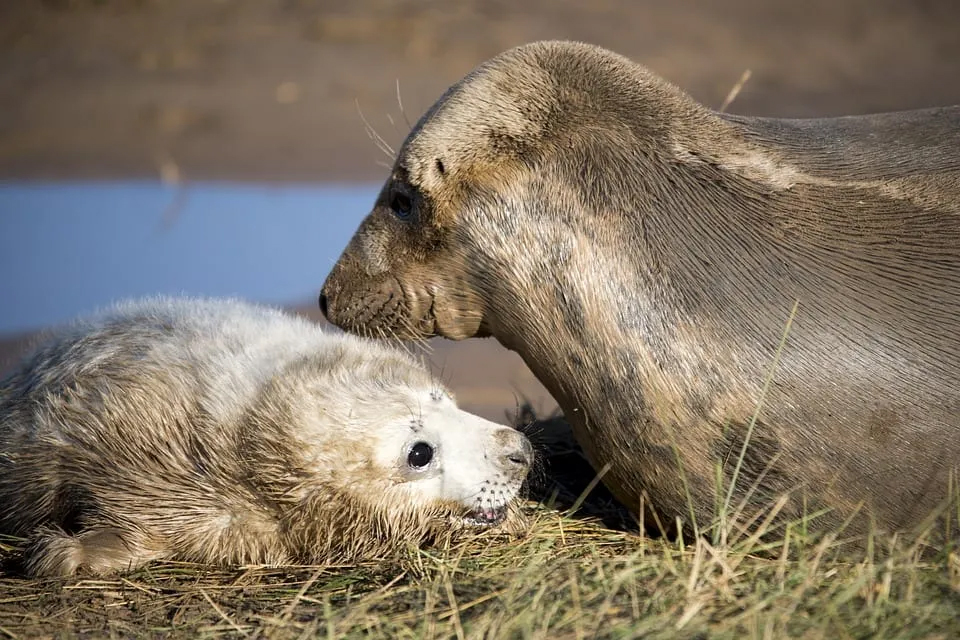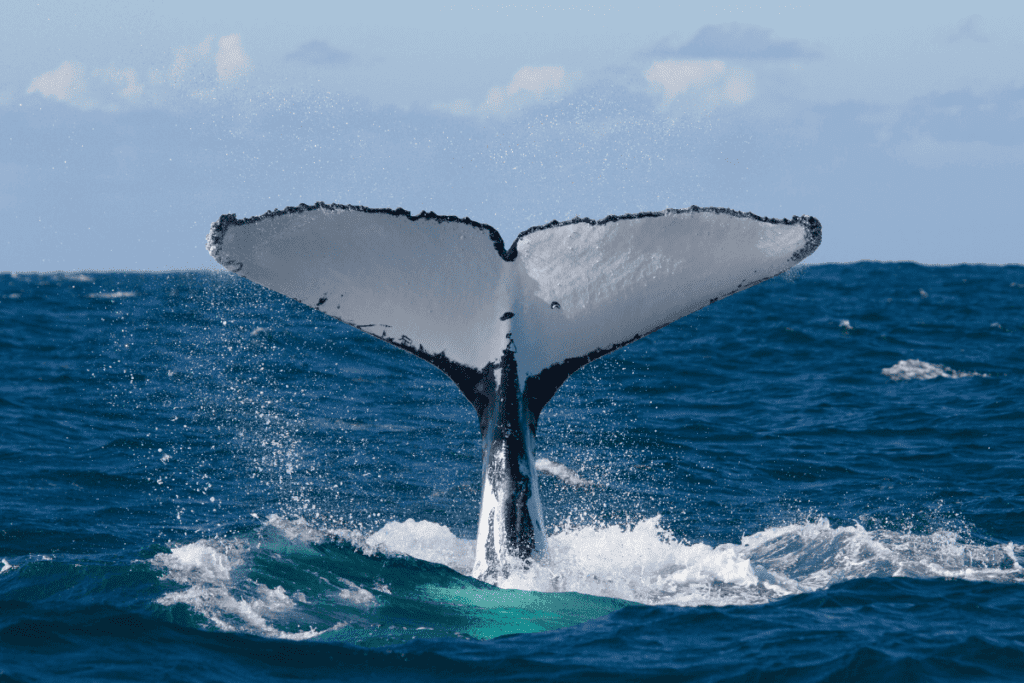Introduction
With its colourful beak, quirky walk, and penguin-like charm, the Atlantic puffin has long captured the hearts of wildlife lovers and coastal visitors alike. Often affectionately dubbed the “clown of the sea”, this endearing seabird is far more than just a pretty face. Behind its comical appearance lies a fascinating life shaped by harsh ocean environments, intricate feeding behaviours, and high-stakes breeding rituals.
While puffins are a beloved symbol of marine wildlife in the UK, particularly in Cornwall, their populations are under increasing pressure and puffin conservation has never been more important. From climate change and food scarcity to habitat loss and human disturbance, these birds face a growing list of conservation challenges. However, there’s also hope. In places like Lundy Island and through efforts led by organisations such as the RSPB, local recovery stories show that with the right support, puffins can thrive once more.
This blog explores the world of the Atlantic puffin. You’ll discover what makes these birds so unique, learn about the threats they face, and find out about responsible tourism.
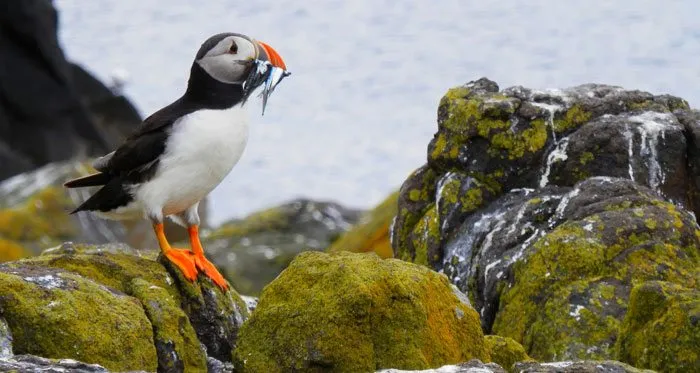
Understanding Atlantic Puffins
The Clown of the Sea – Physical Characteristics
The Atlantic puffin (sometimes nicknamed a ‘sea parrot’) is a small, stocky seabird with distinctive physical features that make it easily recognisable. It is black and white (a black back and white underparts), with a striking, large triangular bill that is brightly coloured orange during the breeding season. Its face is pale grey with a bold black line extending from the beak to the eye, giving it a clown-like appearance. Puffins have short wings adapted for both flying and swimming, and their bright orange webbed feet are well-suited for diving and propelling themselves underwater. They typically stand about 25cm tall and weigh around 500 grams.
Seasonal Plumage Changes
The Atlantic puffin undergoes noticeable seasonal plumage changes, particularly between the breeding and non-breeding seasons. During the breeding season, puffins display bright, colourful features, most notably their vivid orange beak. This vibrant appearance plays a role in attracting mates.
However, after the breeding season ends, puffins moult and adopt a more subdued appearance. Their beaks lose the bright colouration and become smaller and duller in colour, while their facial feathers darken, giving them a more uniform grey appearance. These seasonal changes help puffins blend into their open-ocean environment during the winter months, providing camouflage from predators.
Diet and Feeding Behaviours
Atlantic puffins primarily feed on small fish, with a preference for species such as sand eels and herring. They are skilled hunters, using their wings to “fly” underwater while chasing prey with quick, agile movements. Puffins typically hunt in shallow coastal waters and can dive up to 60 metres in search of food.
One of their most remarkable feeding behaviours is their ability to carry multiple fish in their beaks at once, thanks to a specialised hinge in their jaw and spiny tongues that help secure their catch. This allows them to bring back several fish at a time to feed their chicks, often with fish neatly arranged head-first for easy swallowing. Their efficient feeding habits are crucial during the breeding season when both parents work tirelessly to feed their young.
Nesting Habits on Clifftops and Islands
Atlantic puffins typically nest on steep cliff edges and remote coastal islands where they are safe from most land predators. They prefer grassy slopes or rocky crevices near the sea, which offer both protection and easy access to feeding grounds.
Puffins dig burrows using their beaks and feet, sometimes as deep as one metre, or they may use natural cavities in rocks when soil is sparse. These burrows serve as nesting chambers where a single egg is laid each breeding season. Both male and female parents take turns incubating the egg and later feeding the chick once it hatches.
Nesting in large groups called rafts, puffins benefit from safety in numbers (as do many other seabird colonies), as the presence of many birds helps deter predators and increases the chance of chick survival.
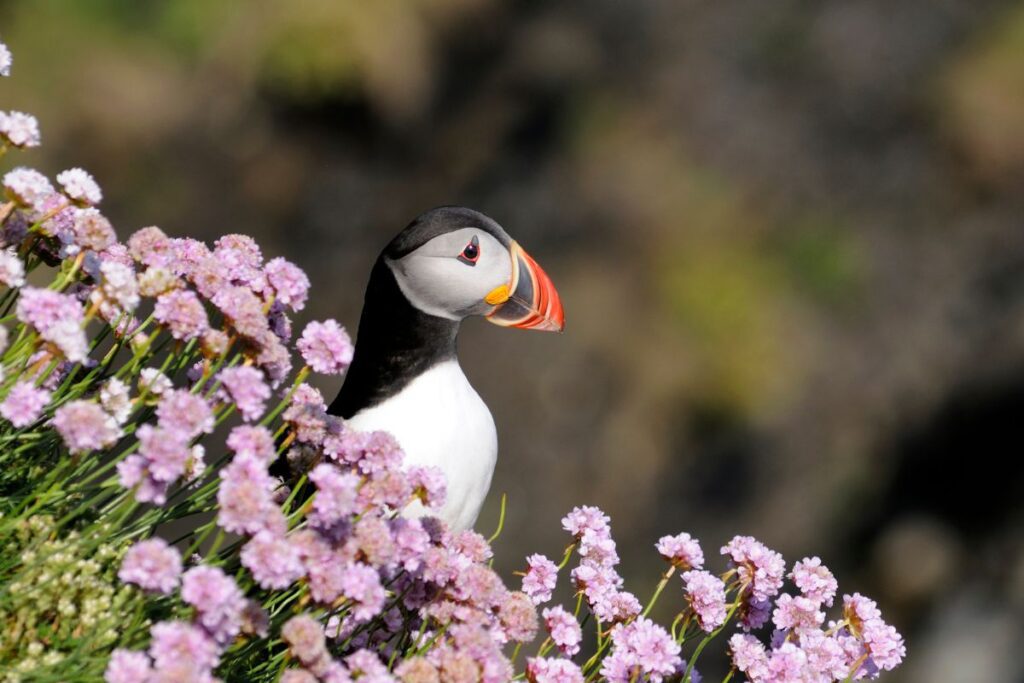
Cornwall’s Puffin Colonies
Best Viewing Times
The peak months for puffin viewing are May and June, when the birds are most active around their nesting sites, flying back and forth with a beak full of fish. Early morning or late afternoon offers the best light for viewing and photography, and visiting remote coastal cliffs or offshore islands increases the chances of seeing these charismatic birds.
Puffin Population Numbers in Southwest England
In Southwest England, particularly on the Isles of Scilly and Lundy Island, Atlantic puffin populations have experienced both declines and recoveries, influenced by conservation efforts and environmental factors.
Key Locations
The Isles of Scilly, located off the southwestern tip of Cornwall, have historically supported puffin colonies. However, recent surveys indicate a concerning trend. Between 2015 and 2023, the overall number of breeding seabird pairs on the islands declined by approximately 18%, with puffins among the species impacted. Despite this, targeted conservation actions, such as the removal of rats from certain islands, have led to notable recoveries in other seabird species.
Lundy Island, situated in the Bristol Channel, has witnessed a remarkable resurgence in its puffin population. Following a rat eradication project initiated in 2006, puffin numbers soared from just 13 individuals in 2000 to 1,335 by 2023. This dramatic increase highlights the positive impact of conservation initiatives on seabird populations.
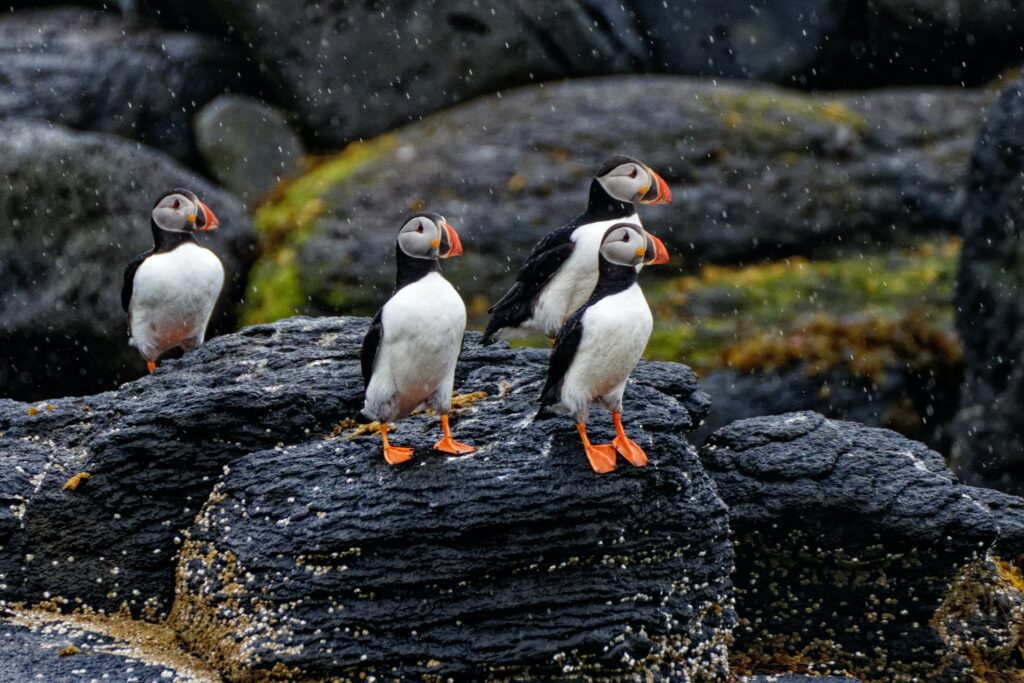
The Puffin Conservation Status Challenge
Atlantic puffins are facing a range of threats that have led to declining populations. These threats include climate change, overfishing, oil spills, rising sea temperatures, food scarcity, habitat loss, and human disturbance.
Threats Facing Puffins
As a species that relies heavily on specific nesting sites and a stable supply of small fish to feed their young, puffins are particularly vulnerable to environmental changes. Conservationists are increasingly concerned about the long-term survival of puffin colonies, especially in areas where these pressures are most intense.
Climate Change Impact
Climate change impacts puffins by altering ocean temperatures and currents, which in turn impacts the availability and distribution of their prey. Warmer waters can cause fish species like sand eels to move to cooler waters or decline in number, making it harder for puffins to find enough food to feed their chicks. Extreme weather events, such as heavy storms during the breeding season, can also damage burrows and make foraging for food difficult. As puffins depend on predictable environmental conditions to successfully breed, these disruptions pose a growing threat to their survival.
Overfishing and Food Scarcity
Overfishing by commercial fisheries reduces the availability of the small fish puffins rely on. When these fish stocks are depleted, puffins struggle to find enough food, leading to lower breeding success and chick survival. In some areas, puffins have been observed bringing back less nutritious or harder to digest fish, which can further reduce chick health.
Habitat Loss and Disturbance
Puffins depend on safe, undisturbed coastal cliffs and islands for breeding. Habitat loss due to coastal erosion, development, or rising sea levels can reduce the number of suitable nesting sites. Additionally, human activities such as tourism, boating, and unregulated access to nesting sites can disturb breeding puffins, causing them to abandon their burrows.
Predation by invasive species like rats and cats, introduced to puffin nesting islands, also poses a serious threat by preying on eggs and chicks. Protecting and managing these habitats is essential to support puffin populations.
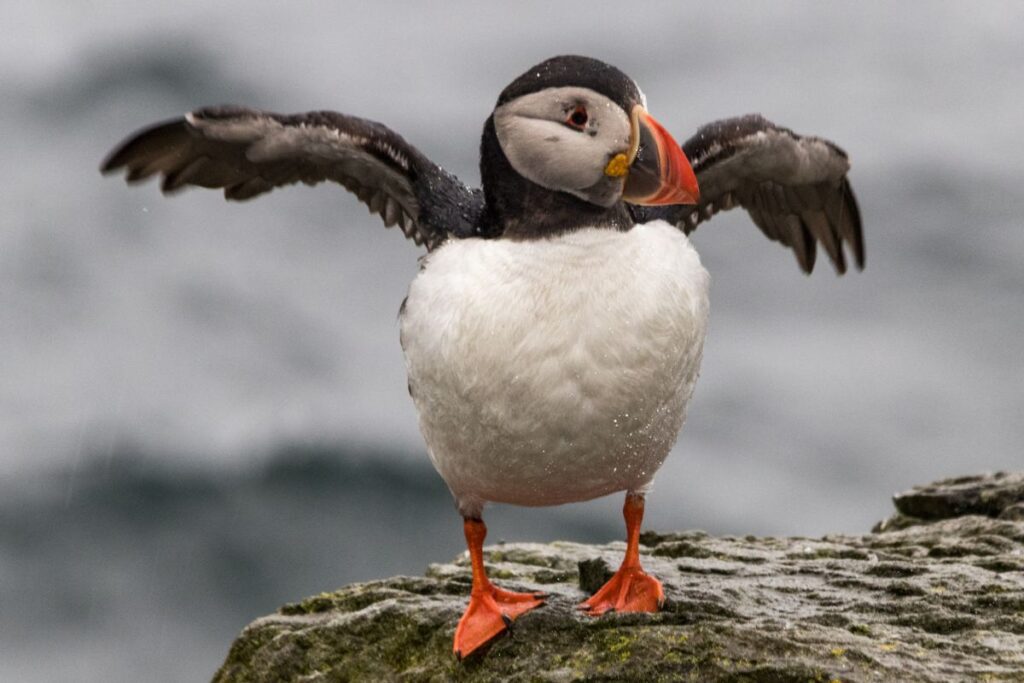
Alarming Statistics About Puffin Conservation
Population Decline Figures Across the UK and Europe
The reasons why Atlantic puffin populations are declining at most breeding sites and increasing at others is unclear. Globally, Atlantic puffins are considered to be vulnerable to extinction. With Britain and Ireland holding around 8% of the global population.
- In Iceland, the puffin population has decreased by approximately 70% since 1995, a far steeper decline than previously estimated.
- Similarly, in Norway’s Røst archipelago, puffin numbers have plummeted by over 80% since the 1970s.
- In the UK, puffin populations have declined by 20-50% since the early 2000s, with some colonies experiencing near-total breeding failures in recent years. These declines are primarily attributed to climate change-induced shifts in prey availability, such as the northward movement of sand eels and the influx of less suitable fish like mackerel.
Additionally, puffins’ low reproductive rates and reliance on specific nesting sites make them highly vulnerable.
Breeding Success Rates Over Past Decades
In Iceland’s Westman Islands, the world’s largest puffin colony, chick production has collapsed for over a decade, leading to a population decline of over 40% since 2003. In the UK, particularly on the Farne Islands, puffin productivity has fluctuated, with notable declines in recent years; for instance, productivity dropped to 0.46 chicks per pair by 2015.
Regional Variations in Population Health
Atlantic puffin populations show regional variations in their health and numbers, reflecting differences in local environmental conditions and conservation efforts. Populations in parts of Scotland, such as the Isles of May, have suffered breeding failures in recent years due to food shortages and changing ocean conditions.
These regional differences highlight how local factors, ranging from habitat quality and human disturbance and fishing pressures and climate impacts, play a crucial role in determining the health of puffin populations across their range.
National and International Puffin Conservation Efforts
RSPB Conservation Projects
The Royal Society for the Protection of Birds (RSPB) plays a vital role in conserving Atlantic puffins through a variety of targeted projects across the UK. One of their key initiatives involves protecting and managing important puffin breeding sites such as the Isle of May and Skomer Island, by controlling invasive predators like rats that threaten eggs and chicks. The RSPB also monitors puffin populations closely, collecting data on breeding success and chick survival to inform conservation strategies.
Additionally, they work to raise public awareness about puffin conservation and advocate for sustainable fishing practices to ensure an adequate food supply for these seabirds. The RSPB aims to halt and reverse the decline of puffin populations, securing a safer future for this beloved species.
EU and UK Wildlife Protection Laws
Under the EU Birds Directive, puffins are protected as a species of conservation concern, which mandates the designation of Special Protection Areas (SPAs) where their breeding sites must be preserved and disturbances minimised.
In the UK, puffins are protected under the Wildlife and Countryside Act 1981, which makes it illegal to harm, disturb, or take puffins or their eggs. Additionally, several puffin breeding sites are designated as Sites of Specific Interest (SSSI) or nature reserves, offering legal protection against habitat destruction and human interference. These laws help ensure puffins have safe breeding grounds and reduce threats from human activities, forming a crucial legal framework for their conservation.
Cornwall Atlantic Puffin Conservation UK
Cornwall is actively engaged in several conservation initiatives to protect Atlantic puffins, particularly in the Isles of Scilly, which host some of the UK’s most significant puffin colonies.
The Isles of Scilly Wildlife Trust (IoSWT) has been instrumental in these efforts, notably through the Isles of Scilly Seabird Recovery Project. This project achieved a landmark success by eradicating brown rats from the islands of St Agnes and Gugh between 2013 and 2017, significantly boosting populations of burrow-nesting seabirds.
Although puffins were not the primary focus, their populations have also benefited from these habitat improvements. Building on this success, the partnership is now exploring the feasibility of extending rat eradication to other islands to further enhance seabird habitats.
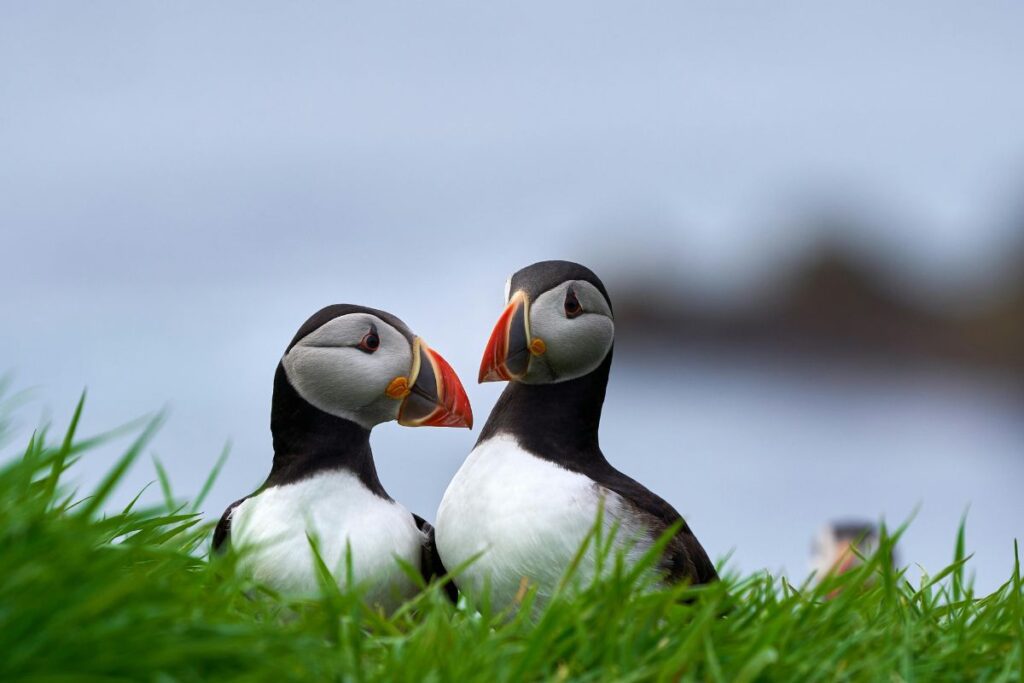
How Responsible Wildlife Tourism Helps
The Padstow Sealife Safaris Approach
Padstow Sealife Safaris is committed to responsible wildlife watching, ensuring that our trips have a minimal impact on marine ecosystems while providing customers with unforgettable experiences. Our ethos focuses on sensitive wildlife observation without disturbing natural habitats, a principle reflected in our operations and crew training.
Each trip is guided by marine science professionals who record all wildlife sightings and share this data with Cornwall Wildlife Trust and Seawatch Foundation, contributing to ongoing conservation research and policy development. Padstow Sealife Safaris also actively participates in local conservation efforts, including beach clean-ups and the retrieval of ghost fishing gear to protect marine life from plastic pollution and entanglement hazards.
Ethical Wildlife Viewing Guidelines
Ethical wildlife viewing guidelines are essential for protecting animals and their habitats while allowing people to enjoy meaningful encounters with nature. These guidelines emphasise observing wildlife from a respectful distance, using binoculars or zoom lenses rather than approaching animals too closely.
Wildlife watchers should avoid making loud noises or sudden movements that could disturb or stress wildlife, especially during sensitive periods like breeding or nesting. Feeding wild animals is strongly discouraged, as it can alter natural behaviour and make them dependent on humans. Ethical viewing also includes staying on marked paths or designated areas to prevent habitat damage and following the advice of local conservation experts or guides. By adhering to these principles, wildlife watchers can minimise their impact and help ensure the well-being of the species they come to see.
Contributing to Conservation Research
Padstow Sealife Safaris actively contributes to marine conservation research through a multifaceted approach that combines wildlife monitoring, community engagement, and collaboration with scientific organisations.
On every trip, the Wildlife Guides record sightings of marine species, including seals, dolphins, and seabirds, and submits this data to Cornwall Wildlife Trust. This citizen science initiative aids in tracking population trends and behavioural patterns, providing valuable insights for conservation efforts.
Padstow Sealife Safaris also participates in the Cornwall Seal Group Research Trust’s photo identification program by documenting individual seals and adding new sightings to the catalogue. Additionally, many of the Wildlife Guides volunteer with British Divers Marine Life Rescue and the Marine Strandings Network to assist in rescuing, rehabilitating, and collecting data on stranded animals, further supporting local conservation initiatives.
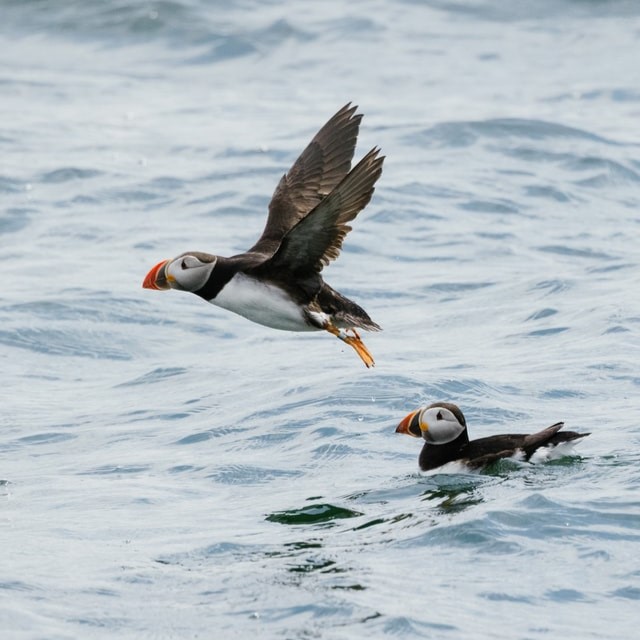
Sustainable Viewing Practices
Best Practices for Tour Operators
Operators should follow established wildlife viewing guidelines, such as maintaining safe distances from animals, avoiding breeding and nesting areas, and limiting engine noises to reduce disturbance. Using eco-friendly boat cleaning products and reducing fuel consumption are also essential.
Visitor Education and Responsibility
Wildlife watchers have an important responsibility when participating in marine ecotourism boat trips to ensure their presence does not negatively impact the animals or their environment. This begins with following the guidance of trained crew and adhering to wildlife watching guidelines, and includes never attempting to touch or feed animals. Passengers should remain on board unless instructed otherwise, and avoid littering or discarding any waste into the sea.
Being mindful of sensitive habitats, like seal haul-outs or seabird nesting cliffs, is also crucial to avoid disrupting breeding or resting behaviours. Observers should also take the opportunity to learn about the marine life they encounter, understanding that responsible behaviour helps protect these species and their ecosystems. By acting with care and respect, wildlife watchers play a vital role in making marine ecotourism a sustainable and conservation-friendly activity.
Minimising Disturbance During Breeding Season
Minimising disturbance during breeding seasons is crucial because this period is one of the most vulnerable times in the life cycle of many marine species. Disturbances caused by noise, close approach, or excessive boat traffic can lead to animals abandoning nests, pups, or chicks, resulting in reduced breeding success or even total reproductive failure.
For seabirds like puffins, being flushed from their nesting burrows can leave eggs or chicks exposed to predators or harsh weather. Similarly, seals and dolphins may become stressed or displaced from important nursery areas.
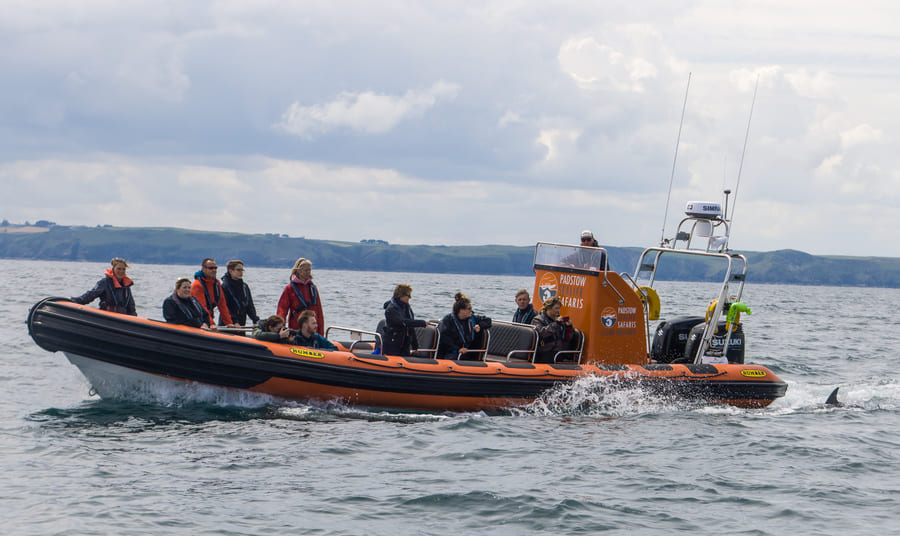
What You Can Do to Help Puffin Conservation in Cornwall
There are several meaningful ways you can help support puffin conservation in Cornwall. One of the most effective actions is to support local and national wildlife organisations such as the RSPB or Cornwall Wildlife Trust, which work to monitor puffin populations and protect critical habitats. Visiting known puffin sites responsibly, sticking to designated paths, keeping noise levels low, and avoiding disturbing nesting areas can minimise human impact. You can also contribute by participating in citizen science projects, such as seabird surveys, which help researchers gather valuable data.
Reducing Plastic Use
Reducing plastic use is an important way to help protect Atlantic puffins, as plastic pollution poses a serious threat to their survival. Puffins, like many seabirds, often mistake small plastic fragments for food or accidentally ingest plastic while hunting, which can lead to internal injuries, blockages, or starvation. In addition, adult puffins may unintentionally feed plastic pieces to their chicks, putting their young at risk. Discarded fishing gear and plastic waste can also entangle puffins, restricting their movement and ability to feed.
Support Sustainable Seafood
Supporting sustainable seafood is a way to help puffin conservation, as one of the major threats to puffins is the depletion of their food sources due to overfishing. Puffins rely heavily on small fish like sand eels and herring to feed their chicks, but these species are often targeted by commercial fisheries. When these fish are overexploited, puffins struggle to find enough food, leading to chick starvation and declining populations.
By choosing seafood that is certified sustainable, such as that labelled by the Marine Stewardship Council (MSC), consumers can help reduce pressure on fish stocks and encourage responsible fishing practices. Supporting sustainable fisheries helps preserve the balance of marine ecosystems, ensuring that puffins and other wildlife have access to the food they need to survive and thrive.
Participate in Citizen Science
Participating in citizen science is a valuable way to support puffin conservation, allowing members of the public to contribute directly to scientific research and monitoring efforts. By recording puffin sightings, nesting activity, or other seabird behaviours during coastal walks or boat trips, individuals can help conservation organisations like the RSPB, Cornwall Wildlife Trust, and Sea Watch Foundation gather crucial data on puffin populations and their habitats.
This information can help scientists track changes over time, identify threats, and guide conservation actions more effectively. Simple activities such as submitting observations through apps or online platforms and joining seabird surveys all contribute to a greater understanding of puffin conservation and ecology. Citizen science empowers communities to play an active role in protecting Cornwall’s marine wildlife and ensures that conservation efforts are informed, collaborative, and impactful.
Experience Puffins Responsibly with Padstow Sealife Safaris
When and Where to See Puffins in Cornwall
Padstow Sealife Safaris offers an unforgettable wildlife adventure with our Puffin Safari boat trips, ideal for bird enthusiasts and families alike. Departing from Padstow Harbour, these 1-hour tours take you to the nearby “Puffin Island” between mid-April and mid-July, a prime nesting site for puffins, razorbills, and guillemots.
Book a Responsible Wildlife Boat Trip
The experienced crew will provide insightful commentary, enhancing your understanding of these remarkable seabirds and their coastal habitat. The high-speed RIB boats offer an exhilarating ride, accommodating up to 12 passengers, ensuring an intimate and exciting experience. While sightings of puffins and other seabirds are common, wildlife encounters can vary, making each trip unique. Whether you’re a seasoned birdwatcher or a first-time visitor, the Puffin Safari promises a memorable journey into Cornwall’s rich marine life.
Conclusion
Atlantic puffins are more than just charming icons of the coast; they are vital indicators of the health of our marine ecosystems. Understanding their behaviours, habitats, and the challenges they face reveals just how interconnected their fate is with our actions.
From shifting ocean temperatures to human disturbance and overfishing, puffins are under increasing pressure, yet the success stories from places like Lundy Island show that with targeted conservation and responsible tourism, recovery is possible. Initiatives such as those led by Padstow Sealife Safaris demonstrate how eco-tourism can play a key role in protecting puffins while offering unforgettable experiences.
Puffin Conservation: Your Questions Answered
Why do puffins need conservation efforts?
Puffins face numerous threats that have led to significant population declines across their range. Climate change is altering ocean temperatures and affecting the availability of their primary food sources like sand eels and herring. Overfishing has reduced fish stocks, while plastic pollution poses ingestion and entanglement risks. Coastal development destroys nesting sites, and introduced predators like rats and cats threaten breeding colonies. These combined pressures have resulted in puffins being classified as vulnerable to endangered in many regions, making conservation efforts critical for their survival.
What are the main threats to puffin populations worldwide?
The primary threats include climate change impacts on marine ecosystems, overfishing depleting food sources, ocean pollution (particularly plastics), habitat loss from coastal development, predation by introduced species, and extreme weather events that can destroy nesting burrows.
How can individuals help with puffin conservation?
People can support puffin conservation by reducing plastic use to minimise ocean pollution, choosing sustainably sourced seafood to protect fish stocks, supporting conservation organisations through donations or volunteering, participating in citizen science projects like seabird surveys, and advocating for marine protected areas. Responsible wildlife watching that doesn’t disturb nesting colonies also helps, as does supporting businesses that contribute to conservation efforts.
What is the current global population status of puffins?
The global Atlantic puffin population is estimated at 12-14 million individuals, but this represents significant declines from historical numbers. Iceland hosts about 60% of the world’s breeding puffins, followed by Norway, the UK, and the Faroe Islands. Population trends vary regionally – some areas show stability or slight increases following conservation efforts, while others continue declining. The species is listed as Vulnerable globally, with some regional populations classified as Endangered, highlighting the urgent need for continued conservation action.
